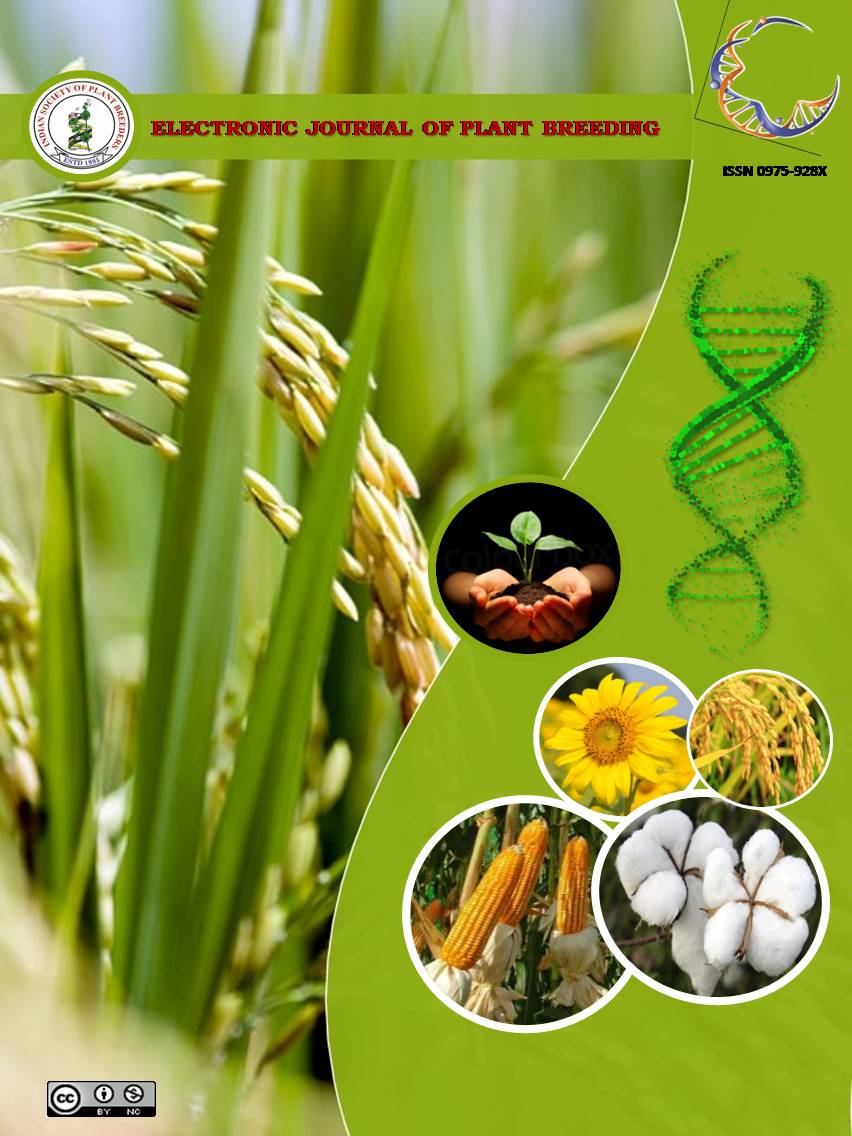Genetic variability and correlation studies in upland cotton (Gossypium hirsutum .L)
Abstract
A total of fifty-four Gosypium hirsutum L F1 synthesized using six lines (four compact and two non-compact) with nine non-compact testers in line x tester fashion were evaluated for seed cotton yield and fibre quality traits. Analysis of variance revealed significant differences among the genotypes for various characters studied indicating the presence of ample variation for effective selection. The phenotypic coefficient of variation (PCV) was slightly higher in magnitude than genotypic coefficient of variation (GCV) for all characters indicating the influence of environment over the expression of the traits studied. High phenotypic and genotypic coefficients of variation were obtained for number of monopodial branches per plant and single plant yield. High heritability coupled with high genetic advance (as per cent of mean) was observed for characters viz., number of monopodial branches per plant, number of sympodial branches per plant, number of bolls per plant, single plant yield and internode length. Correlation studies revealed that seed cotton yield exhibited positive and highly significant corrrelation with number of sympodial branches per plant, number of bolls per plant, boll weight, lint index, ginning out turn and 2.5 per cent span length.

It is certified that:
- The corresponding author is fully responsible for any disputes arising due to the publication of his/her manuscript.
- The article has been seen by all the authors who are satisfied with its form and content.
- The sequence of names of authors in the by-line is as per their relative contribution to this experiment, giving due credit to all scientists who made notable contribution to it.
- All the authors fully understand that inclusion of any other co-authors or exclusion of any co-authors is not possible once the article has been submitted to the journal.
- The corresponding author takes full responsibility for this article.
- The address of the organization where the research was conducted is given.
- The article is exclusive for this journal, and the results reported here have not been sent (and will not be sent during its consideration by this journal) for publication in any other journal.
- Authors agree to abide by the objective comments of referees and do agree to modify the article into a short note as per the recommendation, for publication in the Electronic Journal of Plant Breeding.
- If published in Electronic Journal of Plant Breeding, the copyright of this article would vest with the Indian Society of Plant Breeders, who will have the right to enter into any agreement with any organization in India or abroad engaged in reprography, photocopying, storage and dissemination of information contained in it, and neither we nor our legal heirs will have any claims on royalty.


